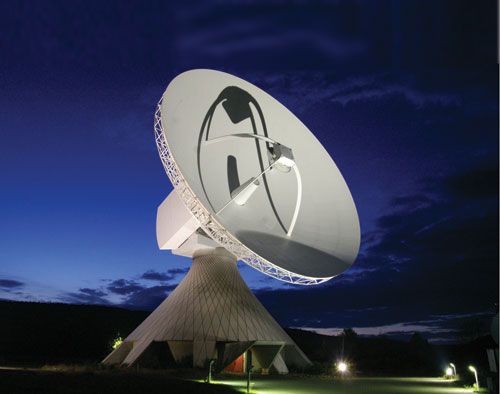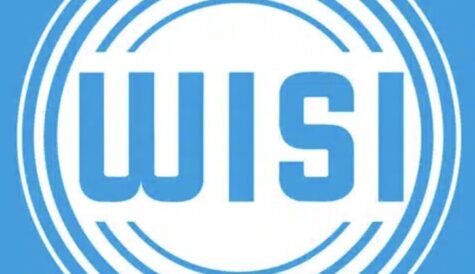The view from 120 million feet – the future of satellite TV
 Despite ongoing growth in non-linear viewing, satellite goes from strength to strength. But can it keep up with future developments? Stuart Thomson reports.
Despite ongoing growth in non-linear viewing, satellite goes from strength to strength. But can it keep up with future developments? Stuart Thomson reports.
Despite ongoing investment in broadband infrastructure in the ground across their most lucrative markets, and despite longstanding predictions that their business stood on the verge of decline, left behind by IP-based video and the explosion in available bandwidth back on Earth, the satellite business has continued to prosper and shows little sign of slowing down.
Yohann Leroy, director of strategy at leading satellite operator Eutelsat, which shares the bulk of the DTH market in major European countries with Luxembourg-based rival SES and recently reported a record backlog and strong first-half growth, points out that the satellite TV business continues to grow on the back of overall expansion in TV penetration, with DTH now representing 20% of TV households worldwide, up from 14% in 2006.
Pay TV market
“In terms of volume, satellite TV channels worldwide are set to increase from over 31,000 in 2011 to 38,000 in 2021. Almost 30% will be HD by this time. This extra content means that satellite operators should continue to plan for sustained capacity demand and to ensure we are developing the right reach and service at the right neighbourhoods,” says Leroy.
Growth comes from different sources. Leroy sees Russia, the Middle East and Africa as the fastest growing at the moment, where the cost of deploying a service by satellite is compelling for service providers. “In emerging markets, DTH continues to grow for both pay TV platforms and free-to-air channels. Moreover, its cost-effectiveness of one-to-many distribution is an inherent competitive advantage of satellites,” he says. “For a pay TV platform serving four million subscribers, the cost of broadcasting a digital channel by satellite is a few cents per month per home. In the terrestrial world – ADSL, DTT networks – distribution costs become less cost-effective as population thins out, making it economically less attractive to attempt to serve all users.”
To strengthen its hold on growing DTH markets, Eutelsat plans to strengthen its capacity at the key 7° West, 8° West and 36° East orbital slots over the next few years. Over 90% of additional Eutelsat capacity planned for 2012-15 is for these high-growth territories, according to Leroy. In more mature markets of western Europe, Eutelsat sees growth coming from HD and ultimately Ultra HD, which it has attempted to promote by launching a demonstration channel in January.
“We see the most successful of our customers offering services on multiple media – DTH, cable and OTT. Each is one more way to reach subscribers.”Jean-Philippe Gillet, Intelsat
Central and eastern Europe and Russia, as well as Africa, are seen as key emerging DTH markets by global satellite operator Intelsat, whose customers include Russia’s Orion Express, Romanian and south-east European operator RCS & RDS, Bulgaria’s Vivacom and South Africa’s MultiChoice. Intelsat serves the Russian market from 85° East and the central and eastern European market from the 1° West platform it shares with Norway’s Telenor Satellite Broadcasting. Jean-Philippe Gillet, vice-president of sales, Europe and the Middle East at Intelsat, says his company sees potential for growth in Africa with DTH, and also for feeding digital-terrestrial transmitters as the continent moves towards digital migration. “We believe there is room for growth in South Africa and elsewhere. It’s complex in that the markets are not developed to the same extent. South Africa is the most developed in video in Africa but there are other areas where we see potential. We believe DTT will create opportunities,” he says. “The African market has a lot of challenges. Cable TV distribution is not well developed and the economics are sometimes a bit challenging, but I think every market is going to keep developing.” The absence of highly developed alternative infrastructure could give DTT a boost, he believes, creating an opportunity for satellite operators to provide primary distribution.
Terrestrial threat
Gillet is sceptical about the threat posed to satellite by terrestrial infrastructure including fibre. “Even in western countries I don’t think this is really a threat. We see the most successful of our customers offering services on multiple media – DTH, cable and OTT. Each is one more way to reach subscribers,” he says.
In central and eastern Europe, Gillet believes that there is an opportunity to provide DTH services to telcos that want to complement their broadband and phone offerings in areas that can’t be reached with IPTV. Vivacom is one example of a telco that chose to launch a satellite TV service as part of its overall strategy. However, Gillet admits that in a number of territories, the economic problems of the region have meant that telcos have put similar plans on hold. Gillet believes growth will come – even in central and eastern Europe – from the launch of HD services, particularly as the intense phase of growth fuelled by price competition draws to a close. Operators, he believes, are now interested in increasing revenue per subscriber and want to develop HD tiers to enable this.
Intelsat’s partner at 1° West, Telenor Satellite Broadcasting (TSBc), is also hopeful that HD can fuel growth in the central and eastern European region, along with further satellite TV launches by telecom operators keen to extend their reach. Lars Janol, chief commercial officer, says HD is still fuelling growing demand in the Nordic region, even if Telenor-owned pay TV provider Canal Digital has struggled to maintain subscriber numbers overall. In central and eastern Europe, where UPC DTH is an anchor customer, TSBc believes that the launch of digital-terrestrial services will spur satellite TV providers to add HD tiers to their offering to differentiate their services. However, the prospects for new DTH launches in the region are relatively slim. “For new customers, we see that the business case for new CEE startups are challenging, especially with the low ARPU,” says Janol. “Most of what interest there is has been coming from the telcos to add DTH as part of a triple-play.” Central and eastern Europe has also seen consolidation, but Janol believes the remaining players will see growth. As for TSBc’s Thor satellites, he says the operator would like to see growth outside its core central European markets of the Czech Republic, Slovakia, Hungary and Romania.
Janol believes that digitisation is playing to the strengths of large players with strong brands that can used to populate digital multiplexes with a range of thematic channels, rather than acting as an enabler for new entrants. He also believes that, in lieu of overall subscriber growth, operators are increasingly poaching customers from each other. Price competition across central and eastern Europe presents a challenge, says Janol. Nevertheless, operators will launch HD services to differentiate their offerings.
Central and eastern Europe is also important to Israel-based Spacecom and its key orbital position of 4° West. The operator of the Amos satellite fleet serves three DTH customers in the region: Magyar Telekom’s T-Home Sat TV for Hungary and Magio TV in Slovakia are anchor customers, while Xtra TV in Ukraine is, says Spacecom’s senior vice-president, sales, European North America and the Middle East, Jakob Keret, beginning to build a solid base among the three million Ukrainian households that receive free-to-air signals from the Amos satellites. “They are quietly building a large audience,” he says. “They launched a year ago and it’s growing. It’s not an easy market but they are doing quite well.” Keret believes channel providers in the region are increasingly looking to pay TV aggregators rather than acquiring satellite capacity on their own as a result of the economic situation. However, he does not believe there are likely to be many new DTH launches in central and eastern Europe in the current economic climate. With regard to telcos’ choice of satellite as the infrastructure to deliver TV services, Keret agrees that operators such as Magyar Telekom view it as one of a number of options to deliver services, using it alongside its terrestrial fixed network. “There are places where the telecom companies do not invest in fibre,” he says. “Where they can do IPTV they will but there is growth in these two verticals. Operators differentiate their satellite offerings by providing HDTV that they can’t achieve over fixed lines.” Keret says that Spacecom will see continued growth at 4° West where Amos 6 will replace Amos 2 and provide additional capacity from 2015. [icitspot id=”46321″ template=”box-story”]
Competition and capacity
When it comes to delivering capacity where it is needed, large operators with big inventories are at an advantage. While core hot spots remain key to the strategy of operators, players such as Intelsat with a large global inventory have been able to move satellites to where they are needed without having to wait on the build and launch of a new craft in all instances. Recently it moved Horizon 2 – a satellite designed for the North American market where growth has slowed – to 85° East to serve the eastern Russian market, for example. “You can move assets to meet demand from another region, although you can’ t do it every day. It requires planning and a lot of discussion with customers,” says Gillet.
For Spacecom’s Keret, the additional 40% capacity provided by upcoming Amos 6 will serve as an engine of growth at its core position. Keret says Spacecom currently enjoys a fill rate of over 90% at 4° West. However, he says, there is intense price competition and prices are decreasing, particularly over Africa where he believes there is overcapacity.
While there may be overcapacity and price competition in some markets, Eutelsat’s Leroy is upbeat, arguing that it has seen the emergence of new players as an opportunity to strike partnerships.
Leroy points to Eutelsat’s ability to strike deals to provide capacity to operators including Egypt’s Nilesat, Russia’s RSCC and the Qatar Satellite Company/Es’hailSat in the Middle East. He says that’s Eutelsat’s position at 7° West and 8° West, targeting over 30 million households across the Middle East and North Africa, is strengthened by Nilesat’s satellites at the same position, and also points out that Eutelsat has developed the 36° East orbital slot with RSCC. As well as targeting 17 million homes in Russia and Ukraine, a separate beam from this position serves sub-Saharan Africa.
Future-proofing
For all satellite’s rude good health, does the growth in popularity of on-demand programming and unicast delivery presents a key challenge to satellite in the longer term?
Satellite operators have promoted hybrid solutions such as the HbbTV standard to enable the delivery of on-demand programming and applications to complement broadcast delivery via satellite.
“We believe that linear TV served by DTH has a long shelf life, with connected TVs and DVRs adding OTT and VOD components to expand the overall video universe for users. Video services in developed markets are likely to evolve towards a mix of linear and non-linear content,” says Leroy, citing the examples of Eutelsat’s involvement in HbbTV, the complementarity of Orange’s DTH and DSL-delivered services and the company’s KabelKiosk hybrid initiative in Germany.
Intelsat, unlike Eutelsat and SES, has not engaged directly with hybrid technologies and video-on-demand and has restricted its activities to providing capacity. In terms of future-proofing satellite, the operator can however point to its planned Epic NG system. This is Intelsat’s next-generation platform built on the concept of multi-spotbeam satellites able to deliver a wider range of services to customers. These could include provision of broadband – and video – to aircraft, as well as the delivery of more localised video content. Gillet points out that the system could, for example, facilitate the delivery of services targeted to a specific part of a large market such as India, where currently operators cover the entire subcontinent.
TSBc’s Janol says that his company is certainly interested in keeping satellite relevant for broadcasters. “We want to keep satellite modern as a distribution platform. In the Nordics and most of the CEE markets the role of terrestrial and mobile broadband infrastructure is moving ahead of satellite,” he says. Janol says TSBc is looking to local partnerships to develop joint products with mobile operator – for example in Hungary with Telenor’s local mobile subsidiary.
Satellite operators have clearly moved to help foster technology solutions – such as push VOD, HbbTV and the use of alternative return channel technologies – that can help ensure satellite’s continued relevance. There is in any case little sign so far that satellite’s future is endangered by migration towards forms of viewing that are better served by terrestrial delivery. The fact is that the TV universe has continued to expand at a sufficient rate – in emerging markets and in hard-to-reach areas of mature markets – to provide room for growth.



